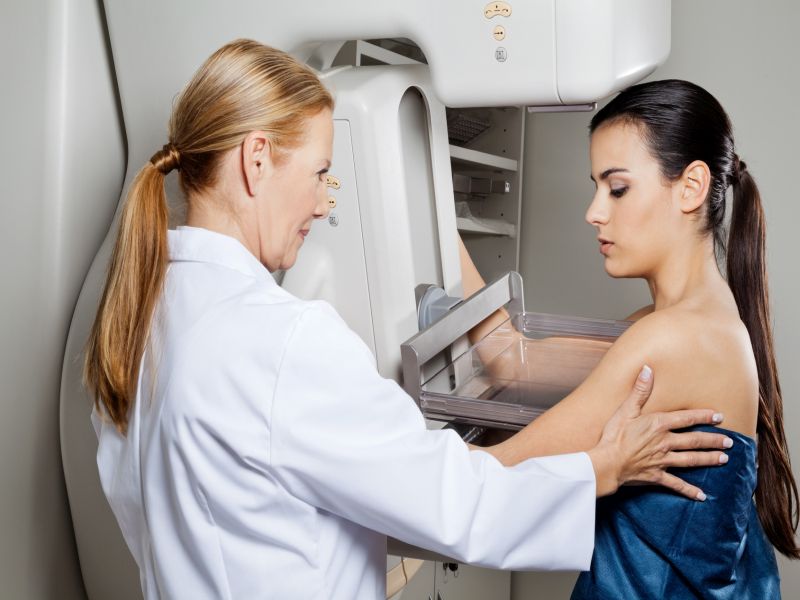THURSDAY, May 18, 2017 (HealthDay News) — Many Americans still don’t get lifesaving cancer screenings because they are uninsured, a new report reveals.
Uninsured people have the lowest rates of mammography, Pap testing and colon cancer screening in the United States, according to American Cancer Society researchers.
“The report underlines the growing disparities in cancer prevention between groups of the American populations defined according to race, ethnicity and socio-economic status,” said Dr. Paolo Boffetta. He is associate director for cancer prevention at the Tisch Cancer Institute at Mount Sinai, in New York City.
But another study published Wednesday found that more cancers have been caught in their early stages since the passage of the Affordable Care Act (ACA), most likely because the law requires that insurers offer complete coverage for certain cancer screenings.
Meanwhile, the American Csncer Society’s new report detailed promising news in the prevention of cancer.
For example, smoking has continued to decline. In 2015, only 15 percent of adults smoked cigarettes. Smoking among high school students fell from 29 percent in 1999 to 9 percent in 2015.
Use of indoor tanning beds also has continued to decrease. Only 4 percent of adults reported using a tanning bed in 2015, while use among high school girls has declined from 25 percent in 2009 to 11 percent in 2015.
But the United States still does not take full advantage of all known ways to prevent cancer, said report author Ann Goding Sauer.
“We have made headway in certain areas, but we still have a ways to go,” Sauer said. “There are things we still can do.”
Screening can catch certain cancers while they are still treatable, but too few Americans are receiving regular testing, Sauer and her colleagues found.
The lowest rates of screening tend to be among the uninsured, noted Dr. Jan Buckner, an oncologist with the Mayo Clinic in Rochester, Minn. Recent immigrants also were less likely to receive regular cancer screening, possibly because they either are uninsured or don’t know how to access health care.
The American Cancer Society report found that:
- Only half of women aged 40 and older had a mammogram within the past year, and two-thirds had one within the past two years. The lowest rate of mammography in the past two years occurred among uninsured women (31 percent).
- Just four out of five adult women had received a cervical cancer-detecting Pap test in the past three years. The uninsured (61 percent) and recent immigrants (68 percent) were even less likely to have had the test.
- Only 63 percent of adults aged 50 and older had undergone colon cancer screening. Again, the uninsured (25 percent) and recent immigrants (34 percent) lagged behind.
“What does stand out is the unevenness of screening and prevention, and it’s pretty clear that a lot of the disparity relates to income,” Buckner said.
Americans also are not taking advantage of another means of cancer prevention — the HPV vaccine to protect against human papillomavirus.
This vaccination can prevent nearly all cases of cervical cancer, as well as many cases of oral and anal cancer, but only 63 percent of girls and 50 percent of boys had received at least one dose of HPV vaccine in 2015. About 52 percent of girls and 39 percent of boys completed two or more doses.
“Even though adolescents are getting vaccinated for other things, HPV is still lagging behind those other vaccinations,” Sauer noted.
Obesity also is increasing Americans’ cancer risk, the report added.
Excess weight has been linked to a higher risk for 13 different forms of cancer, including breast, ovarian, stomach, kidney, liver, pancreatic and colorectal cancers, according to the report.
Seven out of 10 adults carry excess weight, and 38 percent are obese, the report says. Obesity also tripled among teenagers between 1976 and 2002.
Unfortunately, Americans are not taking the steps needed to help control their weight:
- Only half of adults and 27 percent of high school students meet recommended levels of physical activity.
- Fewer than one-third of adults or high school students reported eating two or more servings of fruit per day. Only 16 percent of adults and 15 percent of high schoolers ate vegetables three or more times per day.
“Reducing disparities in cancer prevention and control — notably in smoking and obesity prevalence, and access to screening programs — should be given the highest priority at the national and local level,” Boffetta said.
The new American Cancer Society report was released online May 18.
More information
For more on cancer screening, visit the U.S. National Cancer Institute.
Copyright © 2025 HealthDay. All rights reserved.

